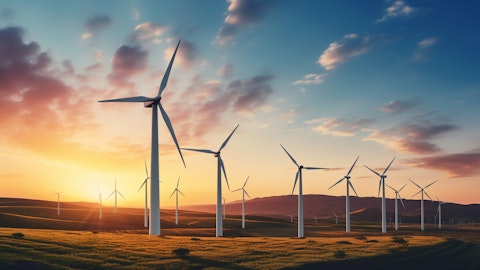And as a result, we think this year will be very, very active from a transaction perspective, both on the investment side and on the capital recycling side. Some of the uncertainty, particularly in the latter half of 2023, probably caused a number of people to stand on the side-lines. Early indications in 2024 is with this reduced uncertainty in the market, people are open for business. We are seeing that in our sales processes that have launched and we are also seeing that in our engagement in terms of new growth opportunities. In terms of where specifically we are seeing those opportunities, I would say, it is across the spectrum and public companies still do remain a key focus of ours, even with somewhat of the relief rally in the latter part of the year.
But I would say where interest rates are settling, it’s a pretty good level for both buying both operating assets and development assets. I think we would be pretty balanced this year going forward.
Robert Hope: Excellent. Thank you.
Operator: Our next question comes from a line of Rupert Merer with National Bank.
Rupert Merer: Hi. Good morning, everyone. One more follow-up on the data center. So the PPAs you’re looking at are the typically simple take or pay contracts or is there some element of capacity required?
Connor Teskey: Yeah, most of them are 17, 18, 20 year take or pay inflation linked contracts. These are the good ones that we want. Some of the large technology companies are increasingly looking for 24/7 green power solutions, and we can use our wind and solar development and pair that with either hydros or battery storage. But I would say that’s typically at a premium or with incremental upside to those call it 17 to 18 to 20 year take or pay inflation-linked contracts.
Rupert Merer: Great. Thank you. And then secondly, looking at your production in the quarter, so you came in around 85% of LTA. We are seeing similar trends across your peer group, of course. Just wondering if you can comment on those recent weather patterns and what you anticipate going forward, maybe some thoughts about your LTA assumptions.
Connor Teskey: Perfect, and thanks for the question and maybe let us share and shine a little bit of light here because there’s really two different dynamics happening within our LTA. One of the key differentiating factors of Brookfield Renewable and one of the things that is really the bedrock of our business is we have that very large critical base of baseload hydro. And while that is very, very valuable, relative to wind and solar, hydrology is a slightly more variable asset class in terms of resource. But there’s two things I would focus on when it comes to our hydro LTA. One, we monitor it exceptionally closely And we are constantly needing to update it for any financings or transactions that we do. And therefore, over any period of time, yes, there can be some variability a little below LTA, a little above LTA, but those long-term averages are bang on.
But even when the resource can be a little above or a little below LTA, the other thing that needs to be overlaid on that dynamic is where is that resource above or below LTA. If our hydro resource is below LTA in a very high value market versus being above LTA in a, I would say, lower value market, that can have a different impact on our financial results. So while that hydrology is a little bit more variable, it is very consistent over the long-term. And the one point we would reference here is as our business continues to grow and diversify, the importance of that hydro LTA is being increasingly diluted over time. The second component of our LTA is a little bit more structural. And it’s showing up a little bit more in our current results today for obvious reasons, which is as we buy new businesses, one of the things we often focus on is finding investment opportunities where there are clear operational enhancements that we can execute in the short to medium term under our ownership.
So often when we buy new businesses, they do start at slightly below LTA as we take over those businesses from their previous ownership. And then as we execute our business plans and implement those operational improvements, those businesses trend up to that LTA number. As we have gone through a period of very, very rapid growth here over the last call at 12 to 36 months, we have more of that in our numbers today than we would have had let’s say three or five years ago. But the great news is that’s all identified, that’s all within our control and we will see those numbers trend up to LTA as we execute on some of the repowerings, refurbishments, equipment replacements that we identified in our underwriting. And that’s all moving very, very much on track and should increasingly play out in our financial performance going forward.
Rupert Merer: So looking at that second component and the overall shortfall to LTA, how much of it was a result of curtailment? So you do see quite significant curtailment of wind power in some markets and of course that’s something that can be controlled to some degree with the addition of batteries or maybe new transmission lines. Is this a significant component of the shortfall for you?





